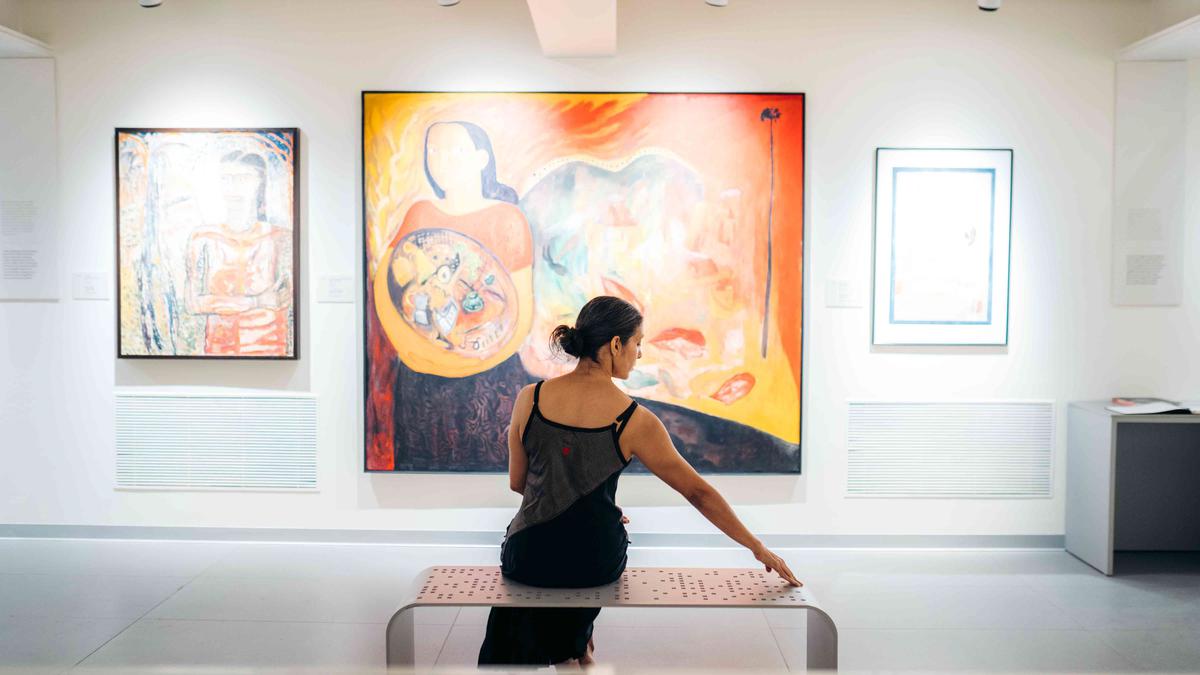
Why the Indian museum makeover is important
The Hindu
As economic progress brings a stronger sense of one’s history, private museums are helping people celebrate their heritage and curate new stories for the future
Once upon a time, India was a merry museum of multitudinous histories, traditional treasures, collections of cultural and intellectual inheritance. And then, infiltrative deception and depletion fast eroded this eternal sense of pride. Industrial hoarding ripped through the ageless art of guardianship, the nouveau riche times were all about shiny new things, out with the old no matter how invaluable. Stripped of its crown of a venerable and vital institution, the museum turned into a dinosaur, oft amusing the odd academician or a few visitors. A prosaic placeholder even as the country pulsated with a progressive cultural poetry.
Cut to the present — the museum stands as a creature reborn, an agent of commoning and transformation, a harbinger of a much-needed cultural renaissance after the cold, corporate excess. Experts say this was a phenomenon long coming as a sum of many parts of progress. “The process has been unfolding over the last four to five years, with many major government and private commitments being undertaken during this time,” says Vinod Daniel, Chair AusHeritage and former board member of the International Council of Museums. “Economic progress and international recognition builds a stronger sense of one’s history and heritage, and showcasing heritage is an important part of nation building. One has witnessed it in countries such as Singapore and China, too. Our historical wealth has not yet been tapped. Moreover, business travellers need quality leisure. For instance, in a city like Paris, a business traveller typically spends one extra day on cultural tourism, the majority being museums. So, it is about creating the same expectation from major cities in India.”
As wealth increases, private collections also expand and create an interesting opportunity as museums when aided by CSR funding and global patronage (which has seen a surge on account of growing philanthropic and BIPOC interest). While much of this revival is being led by seasoned players, it is, in fact, the forces at the core of the programming and curation who are bringing a fresh quality and powerful perspectives to this phygital reform.
Take, for instance, the new Kiran Nadar Museum of Art (KNMA) that will open its doors in the capital in 2026. Designed by British-Ghanaian architect David Adjaye, the museum model was recently unveiled at the Venice Architecture Biennale.
Taking me behind the curation, Roobina Karode, the poised director and chief curator, says, “The collection and the museum’s exhibition programme has grown in a specific way, and that story is important to us in terms of KNMA’s growth and its impact on understudied/under-represented artists and art histories of the region. So, one of the strands of curatorial direction will narrate that story, research and archives made so far. The second important strand would be what are the stories for the future, the narratives that will propel us and our publics in imagining new futures.”
The Museum of Art and Photography, which threw open its 44,000 sq. ft. space earlier this year in Bengaluru with a growing collection of over 60,000 artworks, hopes to make a difference by keeping people at the heart of its story. “Often, the problem with museums is that they forget who their audience is; the language is as if museum professionals are talking to themselves. The important thing for us is to be able to effectively communicate the stories that objects can tell, and why those objects are still relevant to who we are and how we live,” says Kamini Sawhney, the director.
A former journalist who embodies a sharp cultural ethos well evident in her crisp sari and flaming bindi, she is ready to challenge the popular discourse through MAP’s programming. “Who decides what culture is? We’ve inherited art history canons that were handed over to us by colonisers who foregrounded Hindu and Buddhist art as being classical, and the rest in reductive terms, as folk and tribal art. We are eager to ensure that we collapse these hierarchies between what is perceived as high and low art, and work horizontally to draw connections between various things.”

Capt. Brijesh Chowta, Dakshina Kannada MP, on Saturday urged Union Finance Minister Nirmala Sitharaman to facilitate speeding up of ongoing critical infrastructure works in the region, including Mangaluru-Bengaluru NH 75 widening, establishment of Indian Coast Guard Academy, and merger of Konkan Railway Corporation with the Indian Railways.

Udhayanidhi Stalin urges cadres to launch campaign for securing 200 seats in 2026 Assembly elections
Udhayanidhi Stalin urges DMK members to gear up for 2026 Tamil Nadu elections, aiming for 200 seats.









